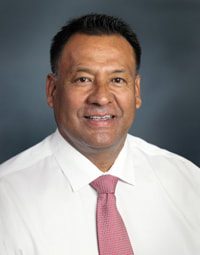 @PWNA4hope @PWNA4hope How can schools practice social distancing when kids return to school? Rafael Tapia Jr.: It’s difficult to find a one-size-fits-all solution for schools on reservations given the varying maximum capacity, student-to-teacher ratio, attendance rates, and physical footprint of each school. Several options have been considered, including shortening school schedules, implementing smaller classroom sizes, repurposing larger spaces such as gyms and cafeterias, and using temporary facilities. However, these options can present their own challenges. We do know it is unlikely “normal” schooling will resume in the near term. And while an online format seems like an obvious solution, many students on Native American reservations do not have access to the internet or computers at home. Is schooling with social distancing even possible? Rafael Tapia Jr.: K-3 grade children will likely be the most challenged when it comes to adhering to social distancing guidelines. Older students may be able to practice these guidelines more responsibly than younger students, but that also depends on the number of students and physical space available in each classroom. What are your thoughts about teachers wearing masks and other PPE? Rafael Tapia Jr.: PPE is necessary for the health and safety of teachers and faculty. In addition to masks, it may make sense to install protective shields at teachers’ workstations to further limit contact. The notion of younger children wearing masks all day is challenging at best. Schools may also need to invest in audio equipment (e.g. microphones, speakers) for teachers so that students can hear clearly as they articular wearing masks. Schools fortunate enough to provide their students with individual computers – primarily middle and high schoolers – could also consider a hybrid teaching method where the teacher livestreams the lesson from the classroom and students listen from their designated workstations. This question comes from a parent. "When schools are open, what signs would be visible that would suggest social distancing is working?” Rafael Tapia Jr.: Successful social distancing will require constant reinforcement from both the parent(s) and the school, along with proper hand washing and adhering to other CDC guidelines. These practices must be consistent in the student’s life outside of school, which can be difficult for many Native families who live in overcrowded homes. Inconsistency between home and school life will create a barrier to success. However, a marker of success would be fewer outbreaks within the school. Can you share how COVID-19 has impacted both K-12 and post-secondary (e.g. tribal colleges) Native American students? Rafael Tapia Jr: Native American students of all ages are experiencing more stress in their home life than before the pandemic. In addition to the social and physical impacts of shelter-in-place orders, many younger students face increased food insecurity without access to meals at school. As many as 20 percent of students on the reservations are juggling schoolwork with limited resources – and without a computer or internet access. Regardless of where the schooling occurs, Native students on the reservations PWNA serves will still need school supplies to support their learning. We asked a handful of our undergraduate scholarship recipients how they are faring and they shared the following perspectives: “My main challenge was the increased workload from my job on campus since we were working to make necessary adjustments to our campus operations. I have managed to maintain a 4.0 GPA and was inducted into Creighton University's Alpha Lota Sigma Honor Society. I have been fortunate to have been able to continue working full-time (though now from home) and my [online] classes were not interrupted. I’ve had the support to continue to be successful, but I’m sure other students have had much larger struggles.”
What type of support are Native American communities receiving or still need as the pandemic continues? Rafael Tapia Jr.: PWNA is working to assist communities with food and water, household supplies, emergency supplies, school supplies and scholarships, training, and more – and these are all critical needs despite the pandemic. What are the plans for reopening schools, to include bus services? Rafael Tapia Jr.: Busing presents a significant challenge to social distancing. While there is no formal plan in place yet, the only thing we know for sure is that it will vary by community and resources. How did remote learning work for students? And what steps are being developed to address the challenges faced with remote learning? Rafael Tapia Jr.: Schools on and off the reservations were not ready to transition to distance learning. Communities, families, and students were also unprepared. We know most of our American Indian Education Fund (AIEF) scholars completed the college year. However, we do not know the completion rate of K-12 children in Native communities who had to finish the school year at home. What is the death toll for the Native American communities as it relates to COVID-19? Rafael Tapia Jr.: As of July 13, Indian Country Today reported 555 deaths: https://indiancountrytoday.com/news/indian-country-s-covid-19-syllabus-EiN-p5Q-XkW-smnaebJV6Q Are there any thoughts you would care to share related to the murder of George Floyd? And how is social justice taking place in the Native American community? Rafael Tapia Jr: respects and honors the diverse culture, history, and concerns of all communities in America. As a Native American-serving organization, we know firsthand how U.S. systems and policies have created social injustice and disenfranchisement for those most vulnerable. We stand in solidarity with the families of George Floyd, Ahmaud Arbery, Breonna Taylor and so many others whose deaths inspire the Black Lives Matter movement. Organizational Information PWNA is a Native-led nonprofit committed to championing hope for a brighter future on under-resourced reservations. To learn more, call 800-416-8102 or visit www.nativepartnership.org. | |
| forest_of_the_rain_interview_k-12_and_covid_responses_7.15.20_submission__pdf.pdf |